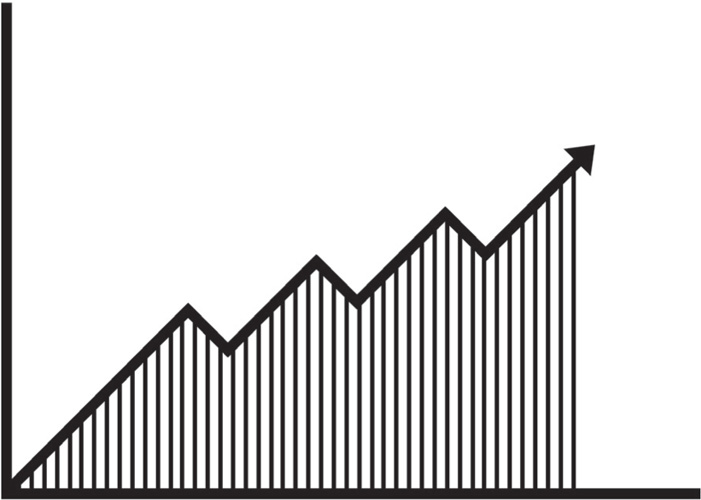CHAPTER 2
OUR MOVEMENT TO FIX FEEDBACK
DECLARATION #1: Feedback should be a good thing. When we take a step back and think about its true intent, we realize that feedback shouldn’t be a bad thing. If we as humans want to improve, grow, and advance, we need insights that can help us move in the right direction. If we close ourselves off from understanding how others experience us, then we close ourselves off to a life of learning and growth.
DECLARATION #2: To make feedback a good thing, change is needed. In the first chapter, we shared with you the reason why not enough of us experience feedback as a positive force. In short, we’re feeling the pain we’ve been inflicting on one another and ourselves over the centuries. If we’re going to break this cycle, we need to change the what, how, and when of engaging in the process. In other words, we need to create our own movement to fix feedback.
MAKING THE CASE FOR CHANGE
I’m ready, I’m ready, I’m ready!
SPONGEBOB SQUAREPANTS
You’ve heard it a million times, but that’s only because it’s true: the first step in any change is acknowledging the need for change. But the sad fact is that we’re all a bit reluctant to get out of our ruts, so we’re usually slow to move until something stirs our emotions enough to make it seem worth tackling.
How about you? Are you ready to change? As you read the examples of feedback gone awry in chapter 1, did you wince as some hit a little too close to home? Did you start compiling a mental list of the times you failed to ask for insights, shut someone down who was genuinely trying to help, complained to your lunch buddies about working with a certain peer, slid a recommendation for improvement between a few half-hearted compliments, or jumped to assumptions before seeking to understand?
Don’t beat yourself up. Remember that I’m right there with you. I can’t tell you how many times in researching and writing this book I’ve found myself cringing as I reflect on things I’ve done, said, not said, not asked, or imposed upon others. While it’s easy to point fingers at all those who have made you grind your teeth and clench your fists, it takes far more courage to stand up and admit to your own mistakes. We need to acknowledge them, learn from them, and then press on, knowing better.
If we’re going to change feedback in a fundamental way, then we need to make this a movement, a seismic philosophical shift in our thinking about feedback, rather than a simple tune-up of our delivery methods. We all need to become seekers of information and truth that will help us contribute to the team, the project, the cause we’re a part of. Managers and leaders, that starts with you. We’ll be asking you to step away from the traditional feedback roles of “knower” and “teller” and slide comfortably into the roles of explorer and learner. This movement will prod us out of what we now know to be the danger zone of telling others what they need to do to change, and into a zone of collaboration where we figure it out together.
By reading this book you’re taking the first step toward becoming a leader in this movement. I’m calling on you to convince others of the need for change, inform them of our purpose (creating a world where feedback helps, not hurts), and model behaviors that make it easier for them to join in. We’ll need to appeal to both the hearts and the minds of those we’re asking to join us. The following sections provide four compelling arguments we hope will do just that.
MEANINGFUL AND MEASURABLE OUTCOMES FOR YOUR BUSINESS
The numbers back up our call for change. New research shows that improving our approach to feedback drives meaningfully improved performance for both businesses and individuals. Let’s begin with a quick dive into the data at the organizational level. In 2018, the Institute for Corporate Performance (i4cp) and the Center for Effective Organizations (CEO) published a joint study called “Performance Feedback Culture Drives Business Impact.”1 In it they looked at the impact of various techniques that are often used to improve performance management effectiveness. They found that the top driver of measurable improvement was the adoption of a Performance Feedback Culture (PFC). Their study notes that “PFC is established and nurtured by company practices that focus managers’ attention on doing performance feedback effectively: regular and varied communication, training on how to do it well, modeling by senior executives in how they do it for their subordinates, rewards and recognition for doing it well, monitoring getting it done, and manager selection and promotion based on excellent performance feedback competencies.” When these elements are in place the results are compelling.
The study looked at 57 publicly traded U.S. companies and compared the results for the top third based on the PFC measurement factors with those of the bottom third. The top third had financial results that were double those of the bottom third, including net profit margin, return on investment, return on assets, and return on equity. Additional learnings from the study reinforce the impact of developmental and ongoing feedback, noting that these two factors had the highest relationship to influencing, developing, motivating, and retaining employees. Another branch of this research looked at organizations that are privately held, foreign, not-for-profit, and/or government organizations. They correlated Glassdoor’s Employer Brand Score for these organizations with the same survey variables. Interestingly, “only one of the predictor variables was significant.” Which one? You guessed it: organizational emphasis on developmental, rather than evaluative, feedback.
In the end, the study concludes what we’ve been advocating in our PM Reboot work for years and the idea that was at the center of my previous book: “Performance management is ineffective for companies that have a weak performance feedback culture. . . . Performance management that is focused on employee-oriented outcomes (including employee development, employee motivation, and employee retention), not performance management that is focused on organizational outcomes, leads to financial success.”
MEANINGFUL AND MEASURABLE OUTCOMES FOR YOUR PEOPLE
Now let’s pivot to examine the data at the human level. I’m intrigued by a series of studies2 conducted by Gretchen Spreitzer and Christine Porath, in collaboration with the Ross School of Business’s Center for Positive Organizations. They interviewed more than 1,200 employees, measuring key metrics related to performance and behavior. Their studies included white-collar and blue-collar workers across multiple industries. They concluded that thriving employees, “those not just satisfied and productive but also engaged in creating the future—the companies’ and their own,” demonstrated better performance than their peers. White-collar workers scored 16 percent higher and blue-collar workers scored 27 percent higher in overall performance. Thriving employees also demonstrated notably better health and 125 percent less burnout. What’s more, they were 32 percent more committed to their organizations and 46 percent more satisfied with their jobs.
The research found two factors that drive an individual’s ability to thrive: vitality and learning. Vitality is defined as “the sense of being alive, passionate, and excited,” while learning is “the growth that comes from gaining new knowledge and skills.” At its simplest level, vitality comes from a strong sense that what we do makes a difference, while learning means we’re building our skills and capabilities while simultaneously boosting our confidence in our potential growth.
I don’t think it’s hard to understand the connection between vitality and learning and feedback. Significant drivers of vitality include relationships, connections, recognition, and clarity—all outcomes of healthy, ongoing feedback conversations. Learning is the result of insights we gain that help us improve, expand, and advance. These are also outcomes of trusted and specific feedback relevant to our growth. So, if we’re looking to drive stronger performance from—and better experiences for—our people, it seems we would want to fuel their sense of vitality and learning. What better way to do that than with inspiring and insightful feedback?
UPPING YOUR LEADERSHIP IMPACT FOR YOU AND YOUR TEAM
Simple fact: leadership is vital to performance. Effective leaders improve performance, while poor leaders drive disengagement and weaker performance. There are shelves of research-based books on leadership, so we don’t need to dwell on the subject here. What’s relevant to our movement is understanding feedback’s influence on the quality and impact of leadership and employee engagement.
If you’ve been looking for the secret sauce to increase your effectiveness as a leader, you can stop looking: it’s feedback!
Jack Zenger and Joe Folkman have conducted several highly recognized studies related to leadership and feedback. They’ve had so much influence on my thinking that you’ll see their findings sprinkled throughout this book. One study3 that included 22,719 leaders looked at the relationship between feedback and employee engagement. The link between a leader’s ability to give honest feedback and employee engagement is stunning. Zenger and Folkman found that those leaders who ranked in the bottom 10 percent for giving honest feedback had teams that ranked 25 percent lower in engagement than their peers. Conversely, leaders in the top 10 percent for giving honest feedback had teams in the top quartile for engagement.
A corollary to this finding, also noted by Zenger and Folkman, is that leaders often hold incorrect and impact-limiting beliefs about feedback. Unfortunately, too many leaders mistake the concept of honest and direct feedback with telling people and teams only what’s going wrong. (I believe there’s some old-school, 1950s thinking fueling this idea that good managers and leaders are tough and never satisfied.) Leaders who fall victim to these false ideas tend to either avoid feedback altogether so as not to appear to be the bad guy or gal, or they gain a reputation as a criticizer due to their propensity for quickly pointing out flaws. Interestingly, the research concludes that effective leaders are those who demonstrate a preference for positive feedback. Positive feedback is not only the best tool for developing your people, but it also reflects well on you as a leader.
Another Zenger and Folkman study4 looked at the relationship between asking for feedback and overall leadership effectiveness. This time they studied more than 50,000 leaders and found that those who were ranked in the top 10 percent for asking for feedback were in the 86th percentile for overall leadership effectiveness. Sadly, those wallowing in the bottom 10 percent for asking were also wallowing in the bottom ranks for effectiveness at the 15th percentile.
I’ve just thrown a lot of information at you about the connection between leadership and feedback. What should you conclude from all that data? If you’re a leader looking to increase your impact, influence, team engagement, and thereby the performance of your team, then get your “ask” on, make the practice of sharing feedback a priority, and put a strong emphasis on positive feedback. Any executive or HR leader who’s looking to influence organizational performance should help their leaders make a habit of asking for and giving feedback, and frequently recognizing the great work of their teams and people.
Why do we see such a strong connection between feedback and the performance of leaders and teams? Here are a few compelling reasons to consider:
INSIGHTS = GROWTH. If feedback provides the knowledge necessary to improve and grow, then you as a leader need it just as much as anyone else. This is where courage and humility come into the picture. You may have to set your ego and self-doubt aside and admit that having been chosen for a leadership role doesn’t mean you’re done growing and learning. In fact, it might mean you have a whole lot more to learn, given your expanded responsibilities and influence.
» Feedback is also the knowledge that helps your people grow and thrive. Creating a culture in which you and your team are better at sharing helpful feedback is key to driving performance and engagement at both the individual and team levels. It can unlock innovation and increase shared learning, both very good things. Your job as the leader is to go first. You’ll need to carry the flag for your own feedback movement.
KNOW WHAT NEEDS FIXING. Your job as a leader is to make it easy for your team to get work done. But how can you do that if you don’t know what’s getting in the way? And how do you find out? It’s simple: you ask.
TRUSTED RELATIONSHIPS THROUGH CONVERSATION. Later, we’ll dig into the importance of relationships and connections as foundations for both positive and improvement-oriented feedback conversations. When I see my clients or employees struggle, I remind them that talking, listening, asking—the daily conversations that build relationships and trust—act as the connective tissue that holds an organization together and makes it strong. And it’s this trust, built on ongoing communication, that’s reflected in those leadership effectiveness scores.
MAKING MEANINGFUL CONNECTIONS
Has anyone ever pulled you aside, scheduled a special lunch, or sent you a handwritten note to express their appreciation for something you told them that made a difference in their life? Looking back on three decades of interaction with clients, peers, and employees, those moments are the most meaningful and a big part of what makes this challenging career I’ve selected so gratifying.
The stories are all unique in their own way. Some might tell me I brought clarity at a time when they needed it, or perhaps I shone a spotlight on a challenge that led them in a new or better career direction. And sometimes it’s been about little things: a casual suggestion, a reflection on something they did well, or a simple word to them to soldier on and be encouraged by the impact they’re making.
I treasure those moments. Who wouldn’t? But I also treasure the times when someone cared enough to take a risk and tell me something I needed to hear. In my early days of leading Arthur Andersen’s Pacific Northwest consulting practice, one of my senior managers took a moment during our weekly drive down to a client to tell me, kindly but firmly, to quit holding back, take the bull by the horns, and get on with leading the practice. I’ve always reflected on that conversation as a turning point in my own trajectory. Similarly, after several years at Hitachi Consulting when I was struggling to stay engaged, one of my close colleagues who was supporting a special project I was working on noted she hadn’t seen me so excited in years. She casually mentioned that, when I was talking about a new people-centered service line I wanted Hitachi to launch, my enthusiasm was contagious. It turns out that her comment, combined with a few other events, opened my eyes to the idea of building my own practice, one focused on people. That service line was never adopted by Hitachi, but it did bloom a few years later as PeopleFirm.
What’s most striking in each of these cases is the influence that our words can have on one another. They have the power to inspire, to unlock potential, to lift us up instead of knocking us down. If that doesn’t get you onboard with this movement, then nothing will.





